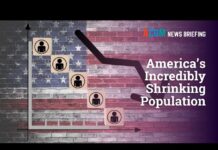
Vidya Sethuraman
India Post News Service
The US procured more than 30.6 million doses of vaccine, which had been distributed across the country, but just over 11.1 million shots have been administered, according to data compiled by the Centers for Disease Control and Prevention. EMS roundtable discussion on Jan 13 discussed the challenges of vaccine distribution, vaccine hesitancy, and possible alternatives to the two-dose regimen so that more people can get an initial dose of the vaccine.

California health officials have said that providers statewide have administered an estimated 40% of the coronavirus vaccine doses they have received. California had administered 1.3 million vaccine shots as of Saturday 16 January, out of nearly 3.2 million doses shipped to local health departments and health care systems in several counties, the state said. The availability of intensive care beds remained well below 15% in the Bay Area region, one of five state-designated regions, according to state data. The Bay Area region, which includes the nine Bay Area counties plus Monterey and Santa Cruz counties, had 3.4% ICU availability as of Friday 15 Jan.
Robert M. Wachter is on the faculty of University of California, San Francisco, reflected on the previous rollouts of personal protective wear and testing and noted that it isn’t a surprise that the vaccine distribution is experiencing similar hurdles. He compared the death rates from COVID as the equivalent of a daily 9/11 terrorist attack, with about 5,000 people dying from the virus each day in the U.S. 75 percent of the vaccines are sitting in refrigerators and freezers right now, the process isn’t streamlined, said Wachter. His priority would be to get all people over the age of 55 immediately vaccinated, which could reduce up to 92 percent of COVID-related deaths.
“There have been a number of bottlenecks, both at the national and local level,” said, Dr. William Schaffner, Professor of Preventive Medicine in the Department of Health Policy as well as Professor of Medicine in the Division of Infectious Diseases at the Vanderbilt University School of Medicine, Nashville, Tennessee. “I think, quite frankly, that some of the locations thought that this was going to be just another flu vaccine campaign. They didn’t prepare sufficiently, Schaffner added. He noted that both the Moderna and the Pfizer vaccine are equally effective.
Vaccine hesitancy is prevalent, especially in ethnic and rural communities. This is high in big red states. “We particularly have to reach the Black population, the Latino population and other minority populations who have historical reasons to mistrust medical care”, said Dr.Schaffner.
Like any extreme stress test, COVID-19 has exposed both the strengths and vulnerabilities of our healthcare system. President-elect Joe Biden, however, plans to release all the doses held in reserve by the federal government to the states when he takes office.






